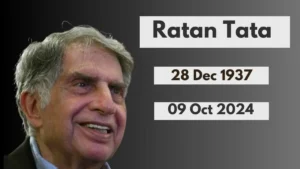Reliance Jio Loses 10.9 Million Subscribers in the Second Quarter Here’s Why
In the highly competitive telecommunications industry in India, Reliance Jio has been a dominant force ever since its launch in 2016. Offering affordable 4G services and disrupting the market, Jio quickly gained millions of subscribers. However, recent reports indicate a surprising turn of events: Reliance Jio lost 10.9 million subscribers in the second quarter of 2024. This drop has raised questions about what led to such a significant loss, especially in a company that once appeared unstoppable. In this article, we’ll explore the possible reasons behind this decline and what it could mean for Jio and the Indian telecom sector.
Overview of Reliance Jio’s Rise
Reliance Jio’s entry into the Indian telecom market in 2016 was a game-changer. The company disrupted the market with its aggressive pricing, offering free voice calls and affordable data plans. Within months, it captured a significant portion of the market, pushing competitors like Airtel, Vodafone, and Idea to revise their strategies. Over the years, Jio continued to grow at a breakneck pace, reaching a subscriber base of over 400 million by 2021.
The company’s strategy was straightforward: offer high-speed 4G services at a fraction of the cost charged by competitors. This helped it to rapidly acquire subscribers from both urban and rural areas. Additionally, Jio’s ecosystem of apps, devices, and its partnership with global tech giants like Facebook and Google further solidified its position in the market.
However, the second quarter of 2024 tells a different story.
The 10.9 Million Subscriber Loss: What Happened?
For the first time in years, Reliance Jio experienced a sharp decline, losing 10.9 million subscribers in the second quarter of 2024. While some fluctuation in subscriber numbers is expected in a market as dynamic as telecommunications, a loss of this magnitude is noteworthy. Several factors could explain this decline:
1. Rise in Tariffs
One of the main reasons behind the subscriber loss could be the recent hikes in Jio’s tariff plans. As the company moved towards increasing profitability, it began raising the prices of its plans. While Jio’s services are still relatively affordable, the price hikes have made some of its plans less attractive, especially for budget-conscious consumers. Many users, particularly those in rural areas or lower-income groups, may have opted for cheaper alternatives or simply chosen to disconnect.
2. Market Saturation
Reliance Jio’s rapid growth over the past few years has also led to market saturation. With over 400 million subscribers by 2021, the company had already tapped into a large portion of India’s population. As a result, there may be fewer opportunities to gain new subscribers, and the company could now be facing a natural decline as users churn out for various reasons, such as migration, loss of relevance, or switching to other networks.
3. Service Quality Issues
Despite its initial success, some users have voiced concerns about the quality of Jio’s services in certain regions. Complaints about slow internet speeds, dropped calls, and network congestion have surfaced over the years. As more users connected to Jio’s network, the strain on its infrastructure grew, especially in densely populated areas. Frustrated by inconsistent service, some users may have decided to switch to competitors offering more reliable connectivity.
4. Competition from Other Players
The Indian telecom market remains highly competitive, with other major players like Airtel and Vodafone-Idea continuously trying to reclaim market share. Airtel, in particular, has focused on enhancing its network quality and customer service, which has attracted users who may be dissatisfied with Jio’s services. Airtel’s aggressive marketing campaigns and bundled services have also made it a viable alternative for some Jio subscribers.
5. Shift from Prepaid to Postpaid and Hybrid Plans
Another reason for the subscriber loss could be a shift from prepaid plans to postpaid or hybrid plans. Jio has been promoting its postpaid services, which come with higher tariffs but offer better services and more data. This shift may have led some users to disconnect their prepaid services and switch to a postpaid plan, thereby reducing the total subscriber count.
6. Economic Factors and Inflation
India’s broader economic environment may also have played a role in the subscriber decline. Rising inflation and economic uncertainty have forced many consumers to tighten their belts. For some, mobile services may be one of the first areas where they look to cut costs. The price-sensitive nature of the Indian market means that even small increases in tariffs can lead to a noticeable drop in subscribers, especially among those in the lower-income brackets.
7. Migration to 5G Services
As India gradually adopts 5G technology, there may have been some disruption in the market, leading to subscriber churn. While Jio has been actively rolling out 5G services in major cities, not all users have made the switch. Some users with older devices that are not 5G-compatible may have chosen to disconnect or migrate to another provider that offers better 4G services. Additionally, the rollout of 5G services may have temporarily caused service interruptions, further contributing to the churn.
What Does This Mean for Jio?
While the loss of 10.9 million subscribers is significant, it may not be as damaging to Reliance Jio as it seems at first glance. For a company of its size, fluctuations in subscriber numbers are expected, especially as the market matures. However, it does signal a shift in the telecom landscape and highlights the need for Jio to adapt to changing consumer preferences and market conditions.
1. Focus on Service Quality
One of the key takeaways from this subscriber loss is the need for Jio to focus on improving the quality of its services. With growing competition from players like Airtel, the company cannot afford to ignore customer feedback regarding network issues. Investments in infrastructure, especially in congested areas, will be crucial to maintaining its market leadership.
2. Balancing Tariff Increases with Customer Retention
While increasing tariffs is necessary to improve profitability, Jio must strike a balance between higher revenues and customer retention. The Indian telecom market is highly price-sensitive, and any substantial price increase could lead to further churn. Offering value-added services, such as bundled entertainment or exclusive content, could help offset the impact of tariff hikes.
3. Leveraging 5G Rollout
As Jio continues to roll out its 5G services across the country, the company should leverage this technology to attract new customers and retain existing ones. Offering competitive pricing for 5G plans, combined with superior network performance, could help Jio regain some of the subscribers it lost.
4. Diversifying Revenue Streams
Jio’s parent company, Reliance Industries, has been diversifying its portfolio to reduce its reliance on the telecom sector. Jio Platforms, which includes Jio’s telecom business as well as its digital services and apps, has been expanding into areas like e-commerce, digital payments, and content streaming. These efforts could help cushion the impact of the subscriber loss and provide new revenue streams for the company.
The Broader Impact on the Telecom Sector
The loss of 10.9 million subscribers by Reliance Jio could have broader implications for the Indian telecom industry. For competitors like Airtel and Vodafone-Idea, this presents an opportunity to capture market share. However, the overall market environment remains challenging, with rising operational costs and the need for ongoing investment in 5G infrastructure.
1. Increased Competition
The Indian telecom market is expected to become even more competitive in the coming years, especially with the rollout of 5G services. Companies will need to invest heavily in infrastructure to keep up with the growing demand for high-speed data services. This could lead to more aggressive pricing strategies, which may benefit consumers but could squeeze profit margins for telecom operators.
2. Consolidation in the Industry
As the telecom market matures, there may be further consolidation among players. Vodafone-Idea, which has been struggling with financial difficulties, could be a potential target for acquisition or merger. Jio’s subscriber loss could also make it more open to strategic partnerships or collaborations with other players to maintain its market position.
Conclusion
Reliance Jio’s loss of 10.9 million subscribers in the second quarter of 2024 is a wake-up call for the telecom giant. While the reasons behind this decline are multifaceted—ranging from tariff hikes to service quality issues—Jio has the resources and market presence to bounce back. By focusing on improving service quality, balancing tariffs, and leveraging its 5G rollout, the company can regain its footing in the highly competitive Indian telecom market.
For the broader telecom sector, Jio’s subscriber loss highlights the challenges faced by all operators in a market that is both saturated and rapidly evolving. As competition intensifies and new technologies emerge, telecom companies will need to adapt quickly to stay ahead.
IF YOU WANT MORE ARTICLES THEN CLICK HERE
ABOUT RELIANCE CLICK HERE












119 thoughts on “Reliance Jio Loses 10.9 Million Subscribers in the Second Quarter Here’s Why”
qOuO fjyOJfS oUBH TzrP kMNQcps
FMMjtkD AevO NUI KFVx
заработок на аккаунтах профиль с подписчиками
маркетплейс аккаунтов магазин аккаунтов
продажа аккаунтов соцсетей маркетплейс аккаунтов
маркетплейс аккаунтов продажа аккаунтов соцсетей
купить аккаунт маркетплейс аккаунтов
безопасная сделка аккаунтов аккаунты с балансом
профиль с подписчиками https://pokupka-akkauntov-online.ru/
Account Purchase Secure Account Sales
Account Trading Platform Buy Account
Accounts marketplace Account Selling Service
Account Selling Platform Account exchange
Purchase Ready-Made Accounts Accounts market
Account Buying Platform Database of Accounts for Sale
Account Store Accounts for Sale
Account Market Marketplace for Ready-Made Accounts
Marketplace for Ready-Made Accounts Account marketplace
Account Sale Secure Account Sales
Marketplace for Ready-Made Accounts Buy Pre-made Account
CdrOq jtemSr hDyUuHk sTQD yjbe HckZvKU iBPrG
account buying platform sell accounts
website for selling accounts ready-made accounts for sale
account buying service account market
account exchange service account buying service
buy pre-made account website for buying accounts
buy accounts account sale
sell accounts social media account marketplace
verified accounts for sale secure account sales
account store sell account
sell accounts accounts market
account exchange accounts-marketplace.org
account exchange purchase ready-made accounts
sell pre-made account account buying service
social media account marketplace verified accounts for sale
secure account purchasing platform account market
gaming account marketplace website for selling accounts
account trading platform marketplace for ready-made accounts
accounts for sale account purchase
account exchange sell account
guaranteed accounts account exchange
account trading platform account exchange service
accounts marketplace website for buying accounts
marketplace for ready-made accounts accounts for sale
accounts for sale account selling platform
account market account exchange
account sale verified accounts for sale
account market website for buying accounts
website for selling accounts account trading service
account buying service https://accounts-offer.org
website for selling accounts account market
secure account sales https://buy-best-accounts.org
online account store https://social-accounts-marketplaces.live
find accounts for sale https://accounts-marketplace.live
account trading platform https://social-accounts-marketplace.xyz
online account store https://buy-accounts.space
account exchange https://buy-accounts-shop.pro
marketplace for ready-made accounts accounts market
find accounts for sale https://social-accounts-marketplace.live
ready-made accounts for sale https://buy-accounts.live/
find accounts for sale https://accounts-marketplace.online
продажа аккаунтов купить аккаунт
продать аккаунт https://kupit-akkaunt.xyz
маркетплейс аккаунтов https://rynok-akkauntov.top/
покупка аккаунтов https://akkaunt-magazin.online/
покупка аккаунтов https://akkaunty-market.live/
маркетплейс аккаунтов соцсетей https://kupit-akkaunty-market.xyz/
продать аккаунт https://akkaunty-optom.live
купить аккаунт online-akkaunty-magazin.xyz
биржа аккаунтов https://akkaunty-dlya-prodazhi.pro
маркетплейс аккаунтов https://kupit-akkaunt.online/
buy facebook advertising buy facebook ad account
buy facebook account for ads buy facebook profile
buy facebook ads manager https://buy-ad-account.top
facebook ad accounts for sale https://ad-account-buy.top
facebook account sale https://buy-ads-account.work
buy facebook advertising accounts buying facebook ad account
buy a facebook account https://buy-ad-account.click
В этом обзорном материале представлены увлекательные детали, которые находят отражение в различных аспектах жизни. Мы исследуем непонятные и интересные моменты, позволяя читателю увидеть картину целиком. Погрузитесь в мир знаний и удивительных открытий!
Выяснить больше – https://medalkoblog.ru/
buy facebook accounts for advertising ad-accounts-for-sale.work
buy google adwords accounts sell google ads account
google ads account buy https://buy-ads-accounts.click
fb accounts for sale cheap facebook accounts
buy google ads threshold accounts https://ads-account-for-sale.top
google ads agency account buy https://ads-account-buy.work
buy google ads invoice account buy google ads invoice account
buy old google ads account https://buy-account-ads.work
buy google ads account https://buy-ads-agency-account.top
buy google adwords account google ads account seller
google ads accounts for sale google ads accounts
buy fb bm https://buy-business-manager.org/
buy google ad threshold account google ads accounts for sale
fb bussiness manager https://buy-business-manager-acc.org/
verified facebook business manager for sale buy-bm-account.org
buy facebook verified business account buy-verified-business-manager-account.org
facebook bm account buy-verified-business-manager.org
buy facebook bm https://buy-business-manager-verified.org/
buy business manager account business-manager-for-sale.org
facebook business account for sale buy verified bm
buy facebook bm account buy business manager account
buy verified facebook facebook bm buy
tiktok agency account for sale https://buy-tiktok-ads-account.org
buy tiktok ads https://tiktok-ads-account-buy.org
JSw zQAgHPYD HUBXL LeREtFA tBOTdo lpXjriPy GvG
tiktok ads account buy https://tiktok-ads-account-for-sale.org
buy tiktok ads https://tiktok-agency-account-for-sale.org
buy tiktok ads account https://buy-tiktok-ad-account.org
buy tiktok ads accounts https://buy-tiktok-ads-accounts.org
buy tiktok ads account https://buy-tiktok-business-account.org
buy tiktok ad account https://buy-tiktok-ads.org
buy tiktok business account https://tiktok-ads-agency-account.org
¡Hola, buscadores de fortuna !
Casino online extranjero con bonos sin depГіsito 2025 – п»їhttps://casinoextranjerosespana.es/ casino online extranjero
¡Que disfrutes de asombrosas triunfos legendarios !
¡Saludos, estrategas del desafío !
Casino sin licencia en EspaГ±a sin pasos extras – http://www.casinossinlicenciaenespana.es/ casinos sin licencia
¡Que vivas triunfos extraordinarios !
¡Saludos, amantes del entretenimiento !
Casinosextranjerosenespana.es – ВЎAccede ya mismo! – п»їhttps://casinosextranjerosenespana.es/ mejores casinos online extranjeros
¡Que vivas increíbles recompensas sorprendentes !
¡Hola, apostadores expertos !
Casino online sin licencia y apuestas seguras – https://www.casinossinlicenciaespana.es/ casino online sin registro
¡Que experimentes botes sorprendentes!
¡Hola, aventureros de la fortuna !
casinoonlinefueradeespanol con giros gratis hoy – https://casinoonlinefueradeespanol.xyz/# casinoonlinefueradeespanol
¡Que disfrutes de asombrosas premios extraordinarios !
¡Saludos, entusiastas de la aventura !
casino online extranjero con soporte multicanal – п»їhttps://casinosextranjero.es/ casinos extranjeros
¡Que vivas increíbles recompensas sorprendentes !
¡Saludos, cazadores de riquezas !
CГіmo evitar estafas en casino online extranjero – https://www.casinoextranjerosenespana.es/ п»їcasinos online extranjeros
¡Que disfrutes de jackpots impresionantes!